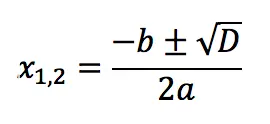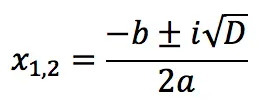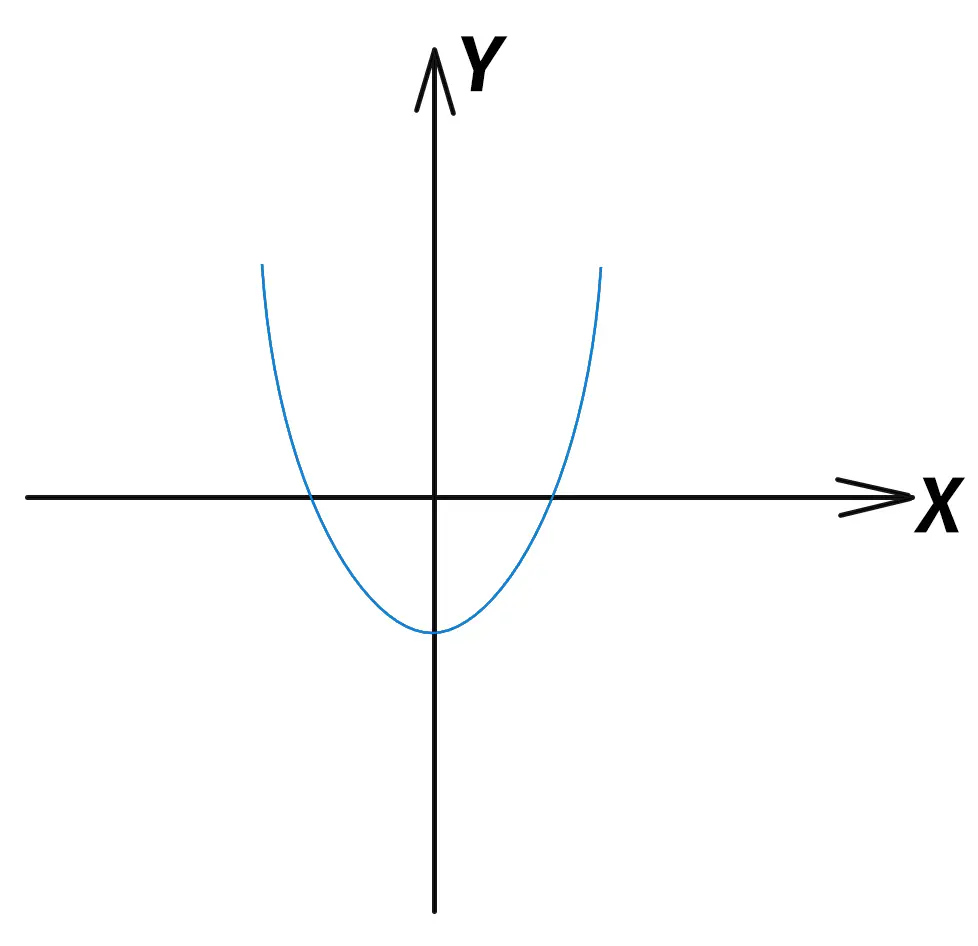Contents
Quadratic equation is a mathematical equation, which in general looks like this:
ax2 + bx + c = 0
This is a second order polynomial with 3 coefficients:
- a – senior (first) coefficient, should not be equal to 0;
- b – average (second) coefficient;
- c is a free element.
The solution to a quadratic equation is to find two numbers (its roots) – x1 and x2.
Formula for calculating roots
To find the roots of a quadratic equation, the formula is used:

The expression inside the square root is called discriminant and is marked with the letter D (or Δ):
D = b2 – 4ac
In this way, The formula for calculating the roots can be represented in different ways:
1. If D > 0, the equation has 2 roots:

2. If D = 0, the equation has only one root:
![]()
3. If D

Solutions of quadratic equations
Example 1
3x2 + 5x + 2 = 0
Decision:
a = 3, b = 5, c = 2

x1 = (-5 + 1) / 6 = -4/6 = -2/3
x2 = (-5 – 1) / 6 = -6/6 = -1
Example 2
3x2 – 6x + 3 = 0
Decision:
a = 3, b = -6, c = 3

x1 = x2 = 1
Example 3
x2 + 2x + 5 = 0
Decision:
a = 1, b = 2, c = 5

In this case, there are no real roots, and the solution is complex numbers:
x1 = -1 + 2i
x2 = -1 – 2i
Graph of a quadratic function
The graph of the quadratic function is a parable.
f(x) = ax2 + bx + c

- The roots of a quadratic equation are the points of intersection of the parabola with the abscissa axis (X).
- If there is only one root, the parabola touches the axis at one point without crossing it.
- In the absence of real roots (the presence of complex ones), a graph with an axis X does not touch.









